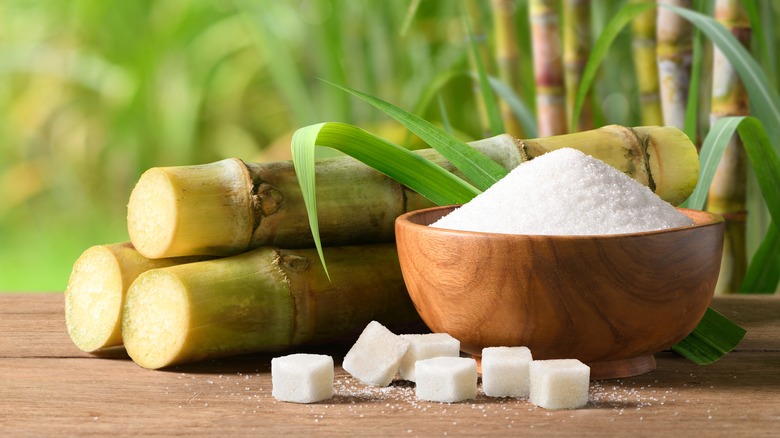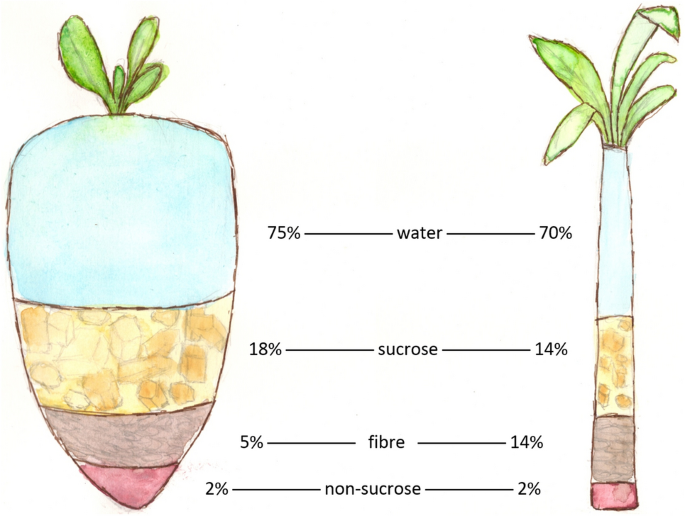The growing techniques for beet sugar vs cane sugar contribute to differences in harvesting time.
The growing techniques for beet sugar vs cane sugar contribute to differences in harvesting time.
Blog Article
Discovering the Differences being used and Advantages In Between Beet Sugar Vs Cane Sugar
In the culinary globe, the option between beet sugar and cane sugar is not simply concerning sweet taste yet entails a nuanced factor to consider of flavor, application, and effect. While both sugars come from different plants, each undergoes unique manufacturing processes that subtly affect their features and viability for numerous recipes. As chefs and consumers significantly prioritize both the ecological and flavor profiles of their components, recognizing these differences ends up being important. This expedition uses understanding into just how each sugar type can best improve culinary developments.
Beginnings and Manufacturing Procedures of Beet and Cane Sugar

Walking cane sugar, on the other hand, comes from the sugarcane plant, an exotic turf native to Southeast Asia but now grown in exotic areas worldwide - beet sugar vs cane sugar. The production of cane sugar begins with the harvesting of cane stalks, which are squashed to release the juice.

Nutritional Content and Health And Wellness Considerations

When comparing the nutritional content of beet sugar and cane sugar, it becomes evident that both types essentially supply the same calorie worths, with about 16 calories per teaspoon and no substantial nutrient variety. Each is made up virtually completely of sucrose, which is an easy carbohydrate that supplies fast power however does not have vitamins, minerals, or fiber. This similarity expands to their influence on wellness, specifically concerning blood sugar level degrees. Both sugars, when eaten in excess, can add to raised blood sugar levels, a threat element for diabetes mellitus and other metabolic disorders. Moreover, too much consumption can result in weight gain and dental you could try here problems, as both sugars are similarly cariogenic, advertising dental cavity. From a health point of view, regulating intake of any kind of sugar, whether from beet or cane, is recommended to avoid these prospective unfavorable effects on wellness. Hence, neither holds an unique benefit over the other in regards to health advantages.
Taste Accounts and Culinary Applications
Regardless of their comparable chemical structures, beet sugar and cane sugar differ discreetly in flavor, which can influence their usage in different cooking contexts. Walking stick sugar frequently brings a tip of molasses, even in its polished form, lending a cozy, caramel-like undertone that boosts baked items, coffee, and chocolate-based recipes. On the other hand, beet sugar look at this now is defined by its very refined, neutral preference, making it a functional sugar that does not alter the flavor accounts of dishes.
Environmental Effect and Sustainability
While both beet and cane sugars are derived from plants, their environmental influences vary considerably due to the distinct approaches of growing and processing required for each. Sugar beet growing frequently includes substantial automation, which can increase fossil gas usage and carbon emissions.
Additionally, the handling of sugarcane commonly generates a substantial amount of waste, consisting of bagasse, which, although useful as biofuel, regularly adds to air pollution if melted inefficiently. Sugar beet handling utilizes more of the raw products, resulting in much less waste. Both markets encounter difficulties in minimizing their environmental impacts, yet recurring developments in farming practices and waste management are aiming to enhance sustainability.
Economic Elements Affecting the Sugar Sector
The financial dynamics of the sugar sector try this site are substantially influenced by international market demands and trade policies. In regions where sugarcane or sugar beet production is subsidized, producers may have a monetary advantage that enables them to provide reduced costs on the worldwide market.
In addition, fluctuations in international need for sugar, affected by dietary patterns and industrial use in foodstuff, directly influence prices and manufacturing levels. beet sugar vs cane sugar. Climate condition additionally play a pivotal role, as they can considerably influence crop yields and, consequently, the supply chain. This irregularity presents a level of economic uncertainty that can bring about financial investment volatility in sugar production markets, affecting choices from growing to market method
Verdict
In conclusion, both beet and cane sugar have unique high qualities that fit different culinary needs. While cane sugar conveys an abundant taste perfect for boosting baked products, beet sugar's nonpartisanship is perfect for lighter recipes.
Report this page